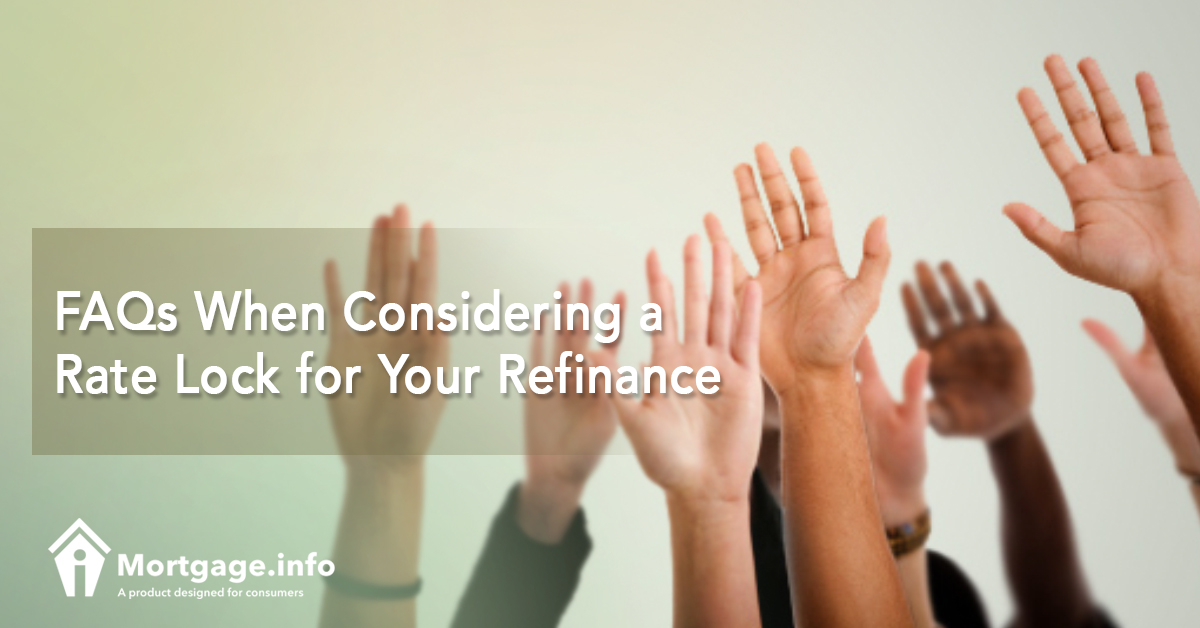Refinancing is pretty sensitive to any rate fluctuations, especially if your goal is centered on getting a lower rate. While there’s no foolproof way to predict where mortgage rates are headed, protecting yourself by locking a rate when refinancing is one of the best things you can do. A rate lock is your security, buys you a peace of mind in sticky situations such as your refi application pending and rates ever changing.
Below are frequently asked questions when considering a rate lock for a refinance.
1. How does a rate lock work?
Submit a loan application first, get pre-approved, or in some cases, have your loan application approved by the lender to take advantage of a rate lock.
When you lock your rate, it will not change nor go up or down regardless of any movement in interest rates.
2. How much does it cost?
There may be lenders who are offering this “feature” for free but the cost is passed onto you through a higher mortgage rate. A longer lock-in period also results in a higher rate for you.
In contrast, a shorter lock-in period could be more cost-effective because you bear more risk compared to the lender.
For rate locks with overt fees, their cost would depend on these factors: (i) amount of the loan, (ii) term of the loan, and (iii) length of the lock-in period.
3. How long should a rate lock be?
A rate lock-in period could be as short as 15 days or as long as 60 days. Experts recommend that you pick a period that will give you ample time to close your refinance application, covering any delays or impediments when refinancing.
If you have locked your rate and this period expires, you can ask the lender for an extension. The lender could charge you with an extension fee. Otherwise, you will lose the rate you negotiated as well as the related points which can lower or increase your rate.
4. How does any change in rates affect my rate lock?
An environment where rates are rising is the best justification to lock down a rate. With a rate locked, you are protected when rates go higher. Your rate, for as long as it is locked, will remain the same.
When rates are falling, your rate will not go lower than what is being locked for you. Still, your rate lock may have a float-down provision, which allows your rate to go further down. This float-down provision is often expensive and available in certain loans.
5. How do I know if a rate lock makes sense?
With a rate lock, you are avoiding the risk of seeing an even higher rate and higher payment should rates shoot up by the time you close your refinance. The tradeoff may be missing a lower mortgage rate and thus a lower monthly payment.
But mortgage rates float up or down, volatility is your enemy. You can only exert control by locking in the rate that you think is best for you at the moment. This is assuming that you have shopped around for the best rates possible before settling for a rate to lock in.
A rate lock is always a good idea especially if you can afford to pay for it.

